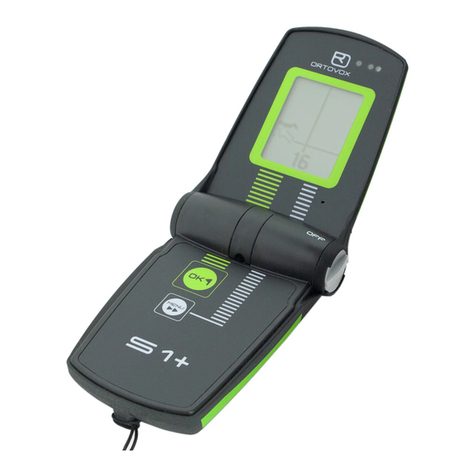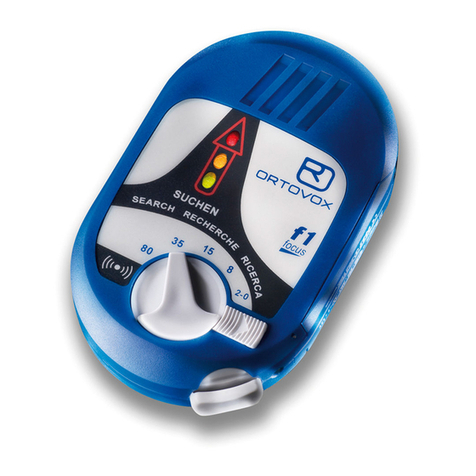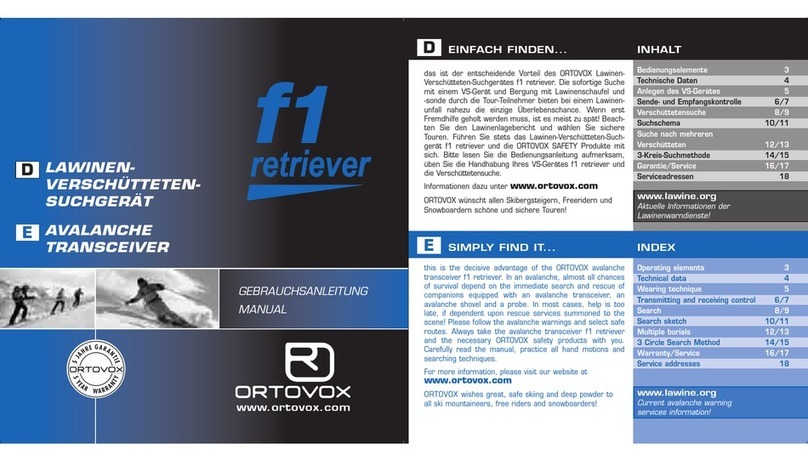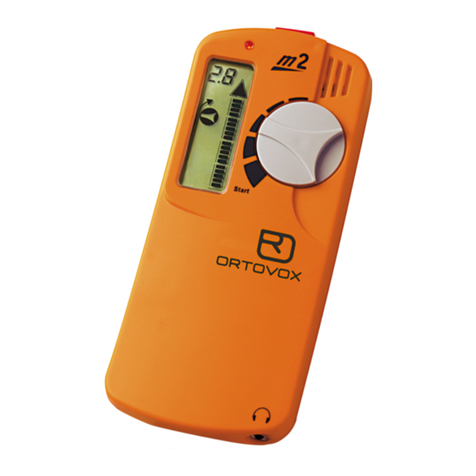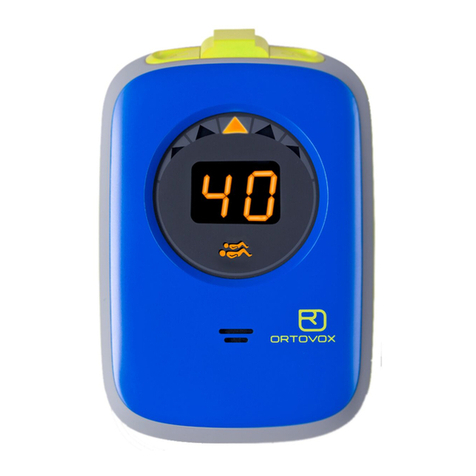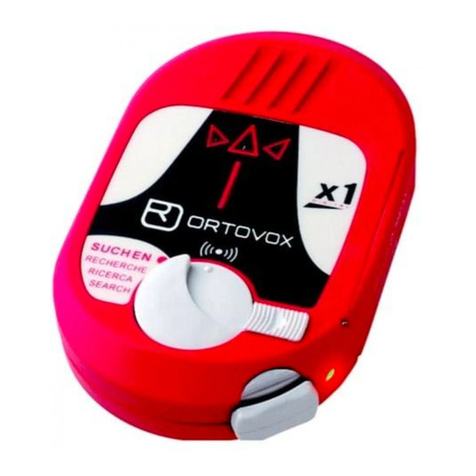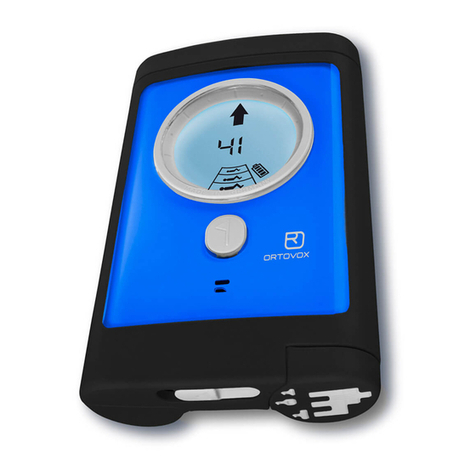QUICK REFERENCE FOR THE ORTOVOX d3 AVALANCHE TRANSCEIVER
24 25
TECHNICAL DATA
DEVICE DESIGNATION: ORTOVOX d3
FUNCTION: digital (triple antenna device)
CASING: ergonomic, waterproof, impact-resistant
DIMENSIONS: 130 x 80 x 25 mm
FREQUENCY: 457 kHz; reception bandwidth tolerance:
+- 200 Hz (thus the d3 can receive signals from any
standard avalanche transceiver with no limitations).
Digital RECEPTION RANGE: Up to 40 m, this high re-
ception range is achieved by two antennas that are vir-
tually the same size, arranged in the x and y direction.
SEARCH STRIP WIDTH: up to 30 m
TEMPERATURE RANGE: -20° C to +45° C
If the transceiver gets wet, do not use direct heat,
i.e. such as a hair dryer, to dry it out. Heat applied
in a direct manner may permanently damage the
device beyond repair.
POWER SUPPLY: 2 alkaline AA LR6 Mignon 1.5 V
E91 AM3 batteries
OPERATING TIME
TRANSMITTING: about 300 hours
RECEIVING: about 40 hours
EARPHONE (optional): 3.5 mm jack
(min. 32 Ohm), stereo earphone
WEIGHT: approximately 230 g incl. batteries and
wrist strap, carrying case approximately 120g
The ORTOVOX d3 surpasses the high requirements
of European standard EN 300 718.
EU DECLARATION OF CONFORMITY
Manufacturer:
X-log Elektronik GmbH
Responsible person:
Mr. Nowotny,
Bahnhofstr. 95,
D-82166 Gräfelfing
declares that the product:
Type: ORTOVOX
Model: d3
Intended Purpose:
Searching for avalanche victims
when used as intended satisfies
the basic requirements in accor-
dance with Article 3 of the R&TTE
guidelines, Directive 1999/5/EC,
and that the following standards
have been applied:
1. Health
(Article 3.1.a of the R&TTE guidelines)
Applied standard(s):
ETS 300 718 issue: 05/01
2. Safety
(Article 3.1.a of the R&TTE guidelines)
Applied standard(s):
ETS 300 718 issue: 05/01
3. Electromagnetic compatibility
(Article 3.1.b of the R&TTE guidelines)
Applied standard(s):
ETSI EN 300 718-1
issue: 05/01
4. Efficient use of the radio
frequency spectrum
(Article 3.2 of the R&TTE guidelines)
Applied standard(s):
ETSI EN 300 718-2
issue: 05/01
5. Electromagnetic compatibility
and radio spectrum matters
(Article 3.3.e of the R&TTE
guidelines)
Applied standard(s):
ETSI EN 300 718-3
issue 2004/02
Gräfelfing, 09/07/2007
(City/date of the Declaration of Conformity)
p. p. Andrea Reintges
(name)
ENGLISH
QUICK REFERENCE FOR THE ORTOVOX d3 AVALANCHE TRANSCEIVER
Coarse search (= Search for first receive signal):
Move through the presumed search area to pick up
the first signal (search strip width: 30 m).
Slowly TURN the d3 in all directions to obtain an optimal
coupling situation with the transmitting device.
2. Receiving = Search:
Move the locking and
emergency switch (6) to
the right, turn the quick
switch to receive mode
(11) to the left and allow
the locking and emer-
gency switch (6) to
engage. After "CH"
(for check) in the display
goes out, the d3 is
ready to receive.
3. Switching back
to transmit:
Move the llocking and
emergency switch (6) to
the right. The quick
switch to receive mode
(11) will automatically
return to the locked
transmit mode position
(5). The d3 will transmit
and the transmit control
light will flash.
1. Switching on and
transmitting:
Insert the forced ON/
OFF bayonet switch (8),
press slightly and at the
same time turn 90°,
(a quarter-turn). The
transmit control light
will flash (7). The device
is ready for operation
and is transmitting.

